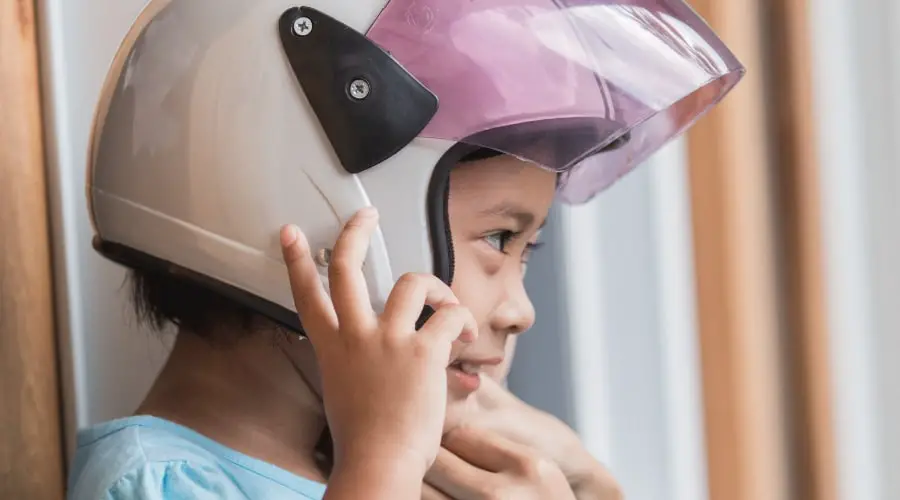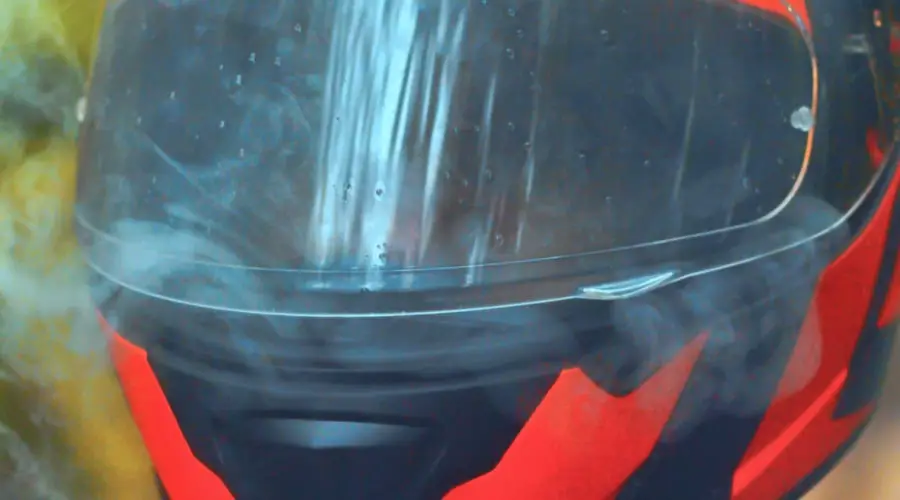As our little munchkins take to the streets, whether for a joyous bike ride or a thrilling skateboarding adventure, the lingering question in every parent’s mind is – are they safe enough? And in the quest for safety, “Is a full-face helmet safer for kids?” pops up quite often. Well, let’s take a deep dive into this topic and put those worries to rest.

Is a Full Face Helmet Safer for Kids?
Before we jump headlong into the rabbit hole, we ought to define what exactly a full-face helmet is. With a design covering the entire face, including the chin and jawline, it’s touted as offering the most comprehensive protection.
Why Full-Face Helmets Stand Out
Full-face helmets are the Rolls Royce of helmets, providing a superior level of protection. They shield the entire head, including the face, and thus significantly decrease the likelihood of injuries in case of a tumble. Moreover, these helmets ensure a quieter riding experience and protect the face from dust and debris.
The Flip Side of the Coin
However, every rose has its thorns, and full-face helmets are no exception. They can be heavy and a tad uncomfortable, especially for the younger kiddos. They might also restrict peripheral vision and can become hot and stuffy in warm weather.
Related: What is a Kids Size Helmet?
Factors to Consider When Choosing a Helmet for Kids
When it comes to the big question, “Is a full-face helmet safer for kids?” there’s no one-size-fits-all answer. Several factors come into play, which we need to address.
Child’s Age and Head Size
Younger children have smaller and relatively delicate heads. Therefore, a lighter, more comfortable helmet might be a safer bet as it’s less likely to strain their necks.
Type of Activity
The kind of sport or activity your child engages in also weighs heavily on the choice of helmet. For high-speed, off-road biking or skateboarding, a full-face helmet would be advisable. For casual, low-speed biking, a traditional bike helmet would suffice.
Alternatives to Full Face Helmets
Every cloud has a silver lining, and in the world of helmets, there’s no lack of options. If a full-face helmet doesn’t float your boat, check out these alternatives.
Open Face Helmets
These helmets cover the top, back, and sides of your child’s head but leave the face exposed. While they provide less protection than full face helmets, they offer better ventilation and visibility.
Modular Helmets
These helmets are essentially full face helmets with a twist. They have a hinged chin bar that can be flipped up, offering the convenience of an open face helmet when needed.
Making the Final Decision
Ultimately, the decision is a delicate balancing act between safety and comfort. The answer to “Is a full face helmet safer for kids?” is a resounding yes when we consider protection alone. But remember, comfort and suitability to the child’s activity are equally important.

Frequently Asked Questions:
1. Is a full-face helmet safer for kids?
Yes, full face helmets offer more protection compared to other types of helmets. However, factors like the child’s age, comfort, and type of activity should also be considered.
2. Can a full face helmet be too heavy for a child?
Yes, full face helmets can be heavy, especially for younger children. Always consider the weight of the helmet in relation to the child’s age and strength.
3. Is ventilation a concern with full face helmets?
Yes, full face helmets can become hot and stuffy, especially in warmer climates. However, many modern designs come with adequate ventilation systems to combat this issue.
4. What kind of helmet should my child use for casual biking?
For casual, low-speed biking, a traditional bicycle helmet would suffice. Full face helmets are generally more suitable for high-speed, off-road biking or skateboarding.
5. Are there any alternatives to full face helmets?
Yes, alternatives include open face helmets and modular helmets. These offer varying degrees of protection and comfort, and the choice largely depends on the child’s activity.
6. How should a helmet fit my child?
A helmet should fit snugly, without wobbling or sliding off easily. It should sit level on your child’s head, and the straps should be buckled securely under the chin. Remember, a well-fitted helmet offers the best protection.
Conclusion
The safety of our kids is paramount. To answer the question, “Is a full face helmet safer for kids?”, yes, it does provide more comprehensive protection. But remember, it’s not just about safety – comfort, age, and the type of activity are all essential factors to consider. So, weigh all these aspects before you make a decision.
After all, our little ones are not just another piece of our puzzle; they are the whole picture. So let’s gear up and help them embrace the joy of adventure, one helmet at a time!
Helmetslab is a website that focuses on providing in-depth reviews and information about different types of helmets, including motorcycle helmets and others helmets. I am writing a post with proper research on the info that helps helmet users.

